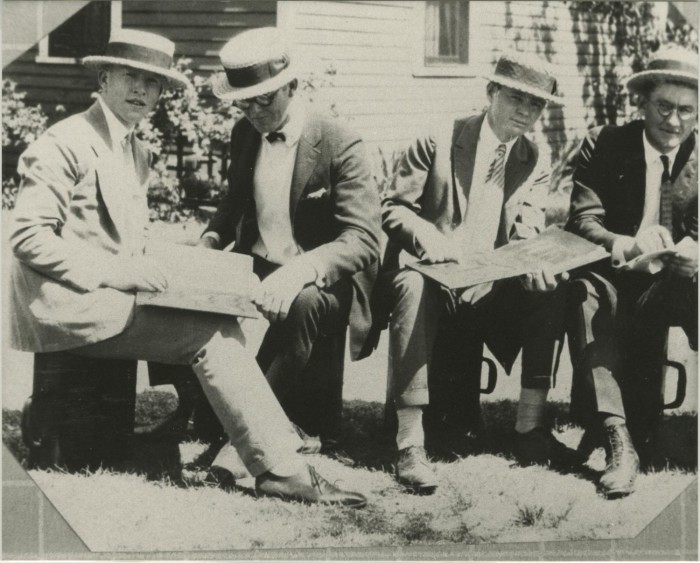In May our colleagues in Technical Services and Cataloging added 409 items to Special Collections holdings. We added many new second copies of some ACC and ACU academic catalogs (both undergraduate and graduate editions), some new hymnals, and many tracts in a variety of languages into the REST collection.

Photograph of four men sitting on their briefcases in grass, each wearing suits, matching hats, and looking at books. A house can be seen in the background. Ca.1920s. From Jesse P. Sewell Photograph Collection: https://texashistory.unt.edu/ark:/67531/metapth597076/
Our goal is to build a comprehensive research-level collection of print materials by, for, and about the Stone-Campbell Restoration Movement. But beyond assembly and preservation, a collection should be discoverable by those who need the information. Collecting and preserving is only part of our task; those objects must be described and made available. Thanks to the close and careful work of our colleagues upstairs, who describe our holdings, these materials are now discoverable. By discoverable I mean a patron can utilize our online catalog (such as by searching by author, or title, or subject) to find these materials.
409 new items…cataloged, shelved, and ready for research: Continue reading
